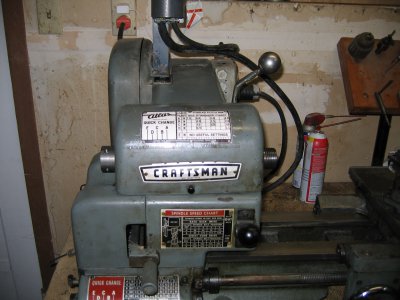- Joined
- Oct 17, 2018
- Messages
- 923
I don't know if this post has any real bearing on the question, just thought I'd throw it out. Some 15 years back, I acquired a 101.27440. A 12X36 with the built on QCGB. A while later I found a complete set of change gears for the earlier model. I don't know if it was a good buy(eBay), but was within what I was willing to pay at the time. So I did. . .
They have never been used, I built a wooden "peg" stand and wrapped them in plastic. They just take up shelf space which I am sorely short of. My philosophy is that I would rather have and not need than to need and not have. Each person has to make decisions like that regularly. It's individual. . . Me, I may or may not need them in the undefined future. But, if I do, I got them. Not too handy, but in the same shop building.
.
I figure the same thing. As long as I have an extra 44 and 52, and anything else I might need, I'm good. Going back to my original question: Does anyone know what other gears I might need?


